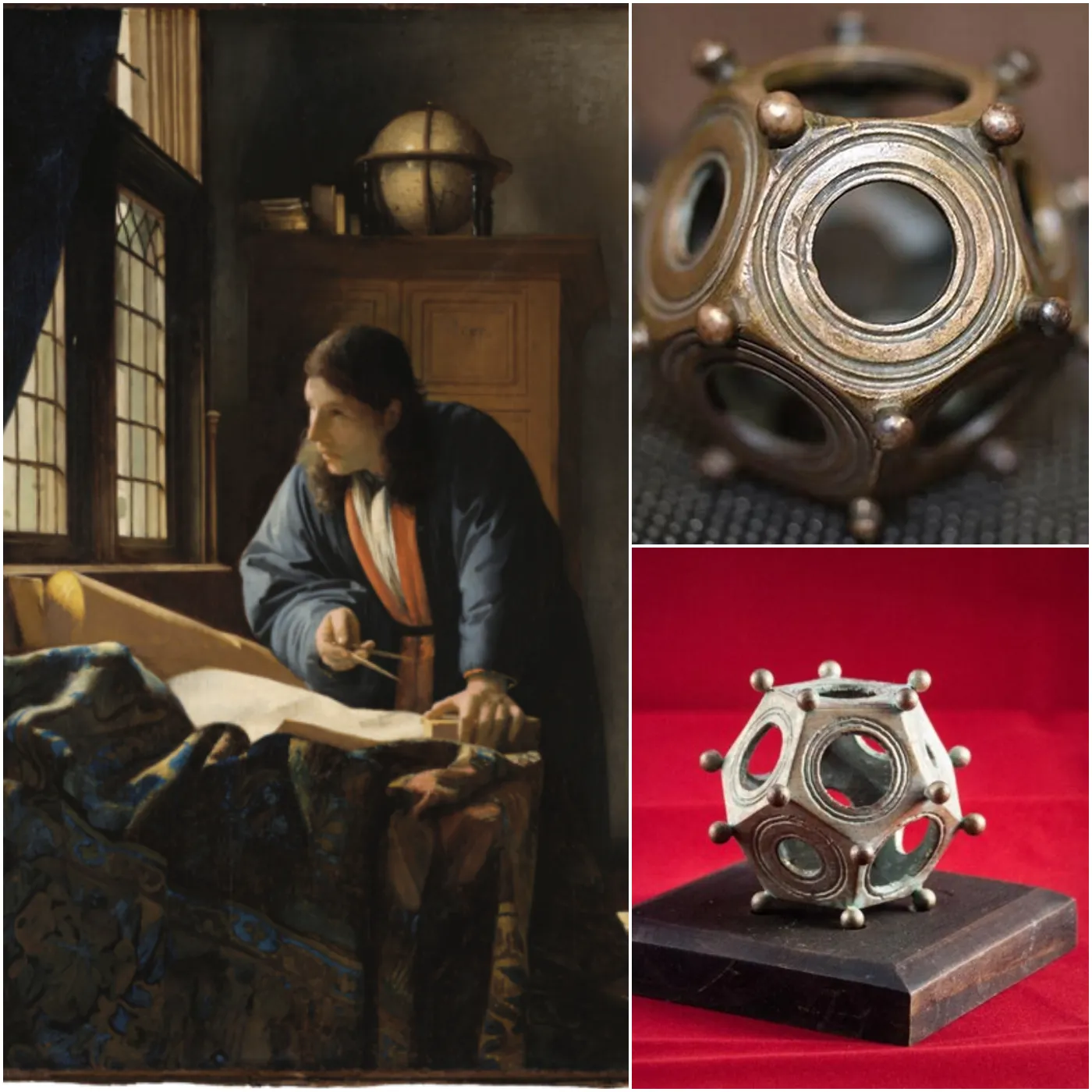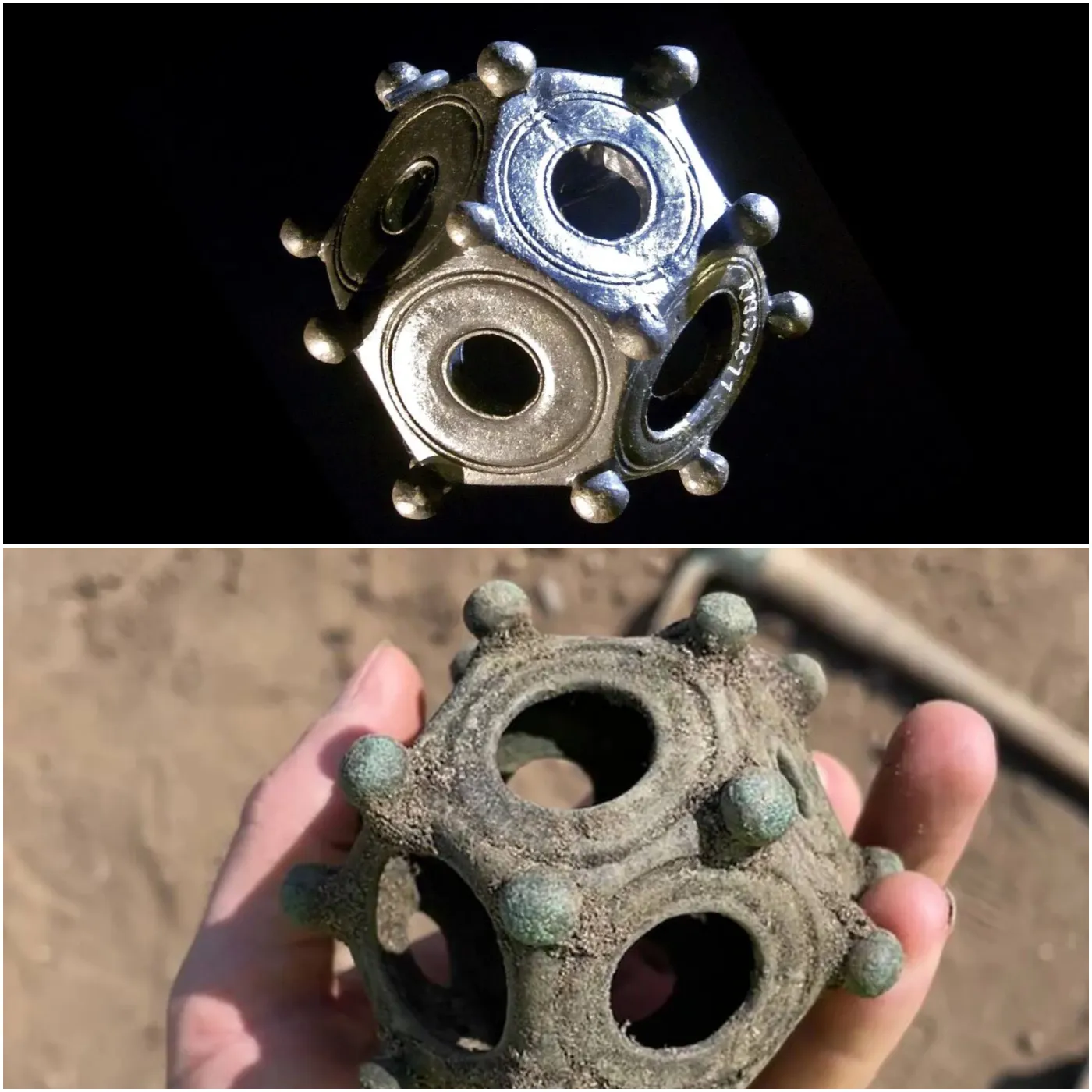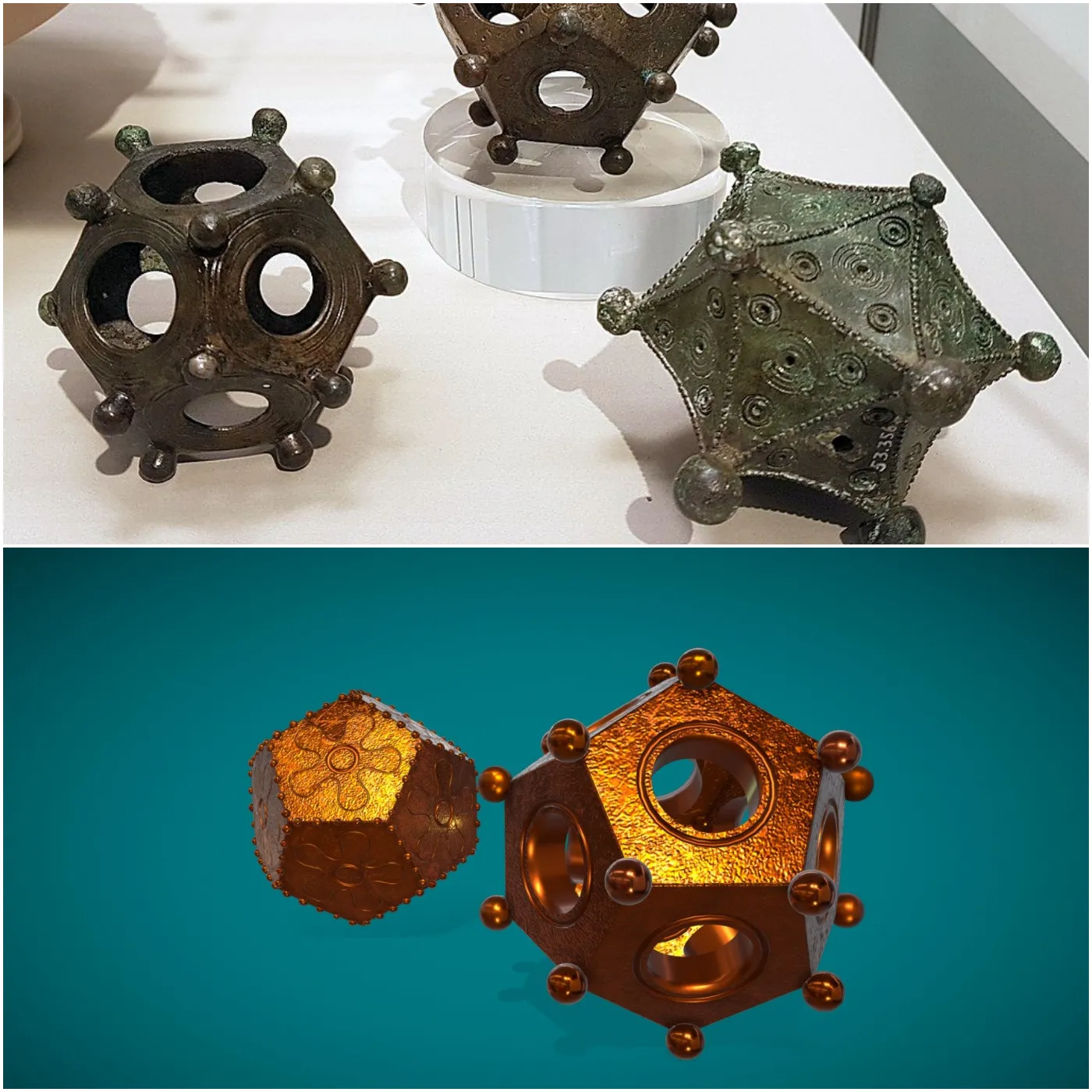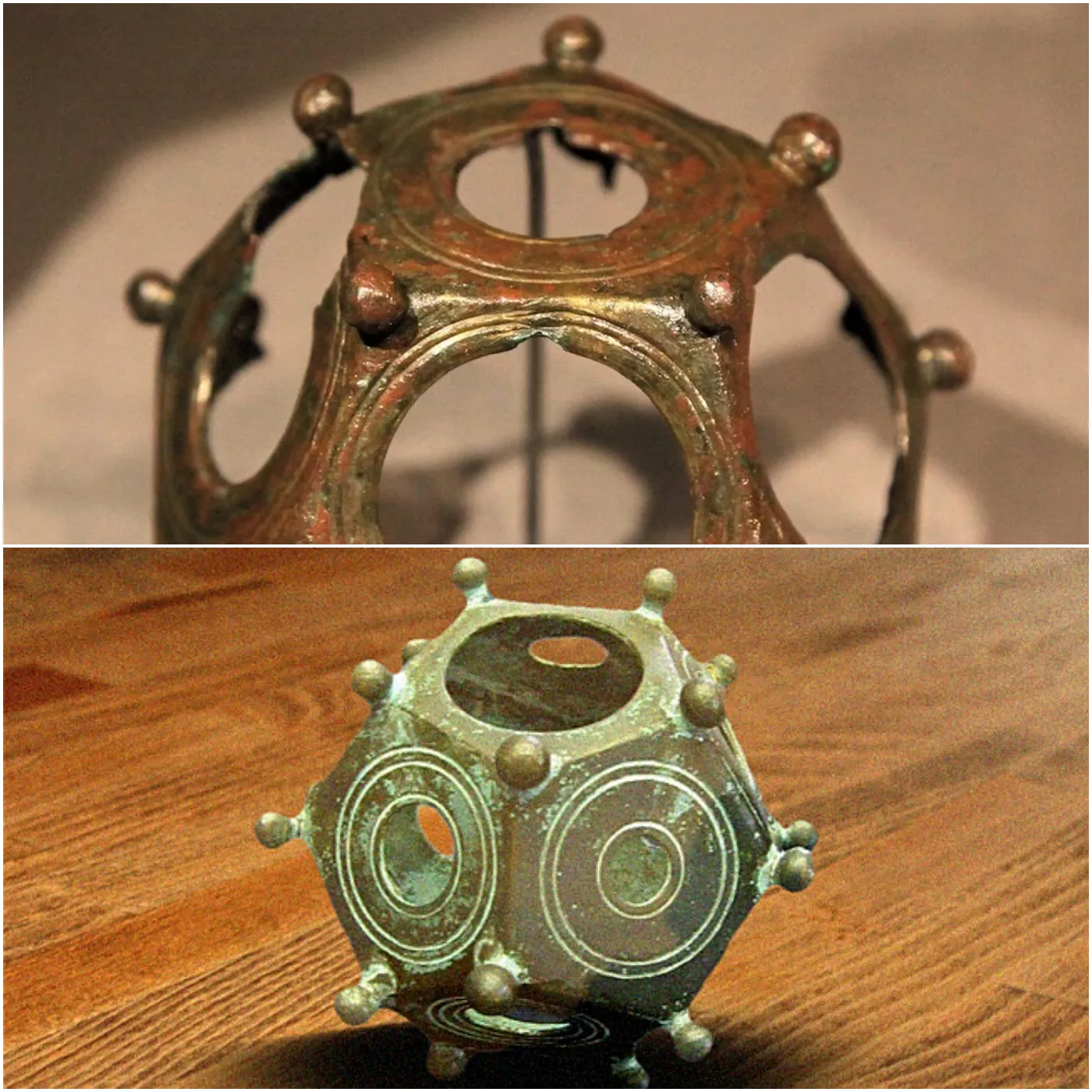

Roman Dodecahedron: The Mystery of an Ancient Artifact
Roman Dodecahedron: The Mystery of an Ancient Artifact
The Roman dodecahedron remains one of the most puzzling artifacts from antiquity. With its intricate design, mathematical precision, and mysterious purpose, this 12-sided object has intrigued historians, archaeologists, and scholars for centuries. Despite numerous discoveries across Europe, no ancient records explain its function, leaving researchers to speculate about its role in Roman society.

What is a Roman Dodecahedron?
A Roman dodecahedron is a small, hollow, bronze or brass artifact with twelve pentagonal faces. Each face features a circular hole of varying diameter, and the entire structure is adorned with small knobs at the vertices. These artifacts date back to the 2nd and 4th centuries AD and have been unearthed across various regions once part of the Roman Empire, including Britain, France, Germany, and Switzerland.

Although their design appears deliberate, the lack of written references or documentation about their use has left historians with many questions. Unlike weapons, coins, or pottery, which often have clear functions, the Roman dodecahedron remains an enigma.
Theories About the Roman Dodecahedron’s Purpose
Many theories attempt to decode the purpose of this artifact, ranging from scientific instruments to religious or decorative objects. Below are some of the most prominent hypotheses:
1. A Measuring Device for Agriculture
One theory suggests that the Roman dodecahedron was used as a tool for measuring distances or angles, particularly in agriculture. Some researchers believe it could have helped Roman farmers determine the optimal planting season by measuring the sun’s position through the holes.
2. A Military Signaling Instrument
Others propose that the dodecahedron served as a communication device in Roman military strategy. The various hole sizes could have allowed soldiers to project light signals over distances, similar to early signal lamps. However, the lack of standardized dimensions across different artifacts challenges this theory.
3. A Tool for Astronomy
Due to its geometric structure, some scholars speculate that the dodecahedron was used for astronomical calculations. The placement of the holes might have helped in aligning celestial bodies or predicting equinoxes and solstices. This idea, though intriguing, lacks supporting evidence from Roman texts or astronomical records.
4. A Knitting or Weaving Guide
A more practical theory suggests that the dodecahedron was used as a knitting or weaving guide, particularly for creating gloves. Some experimental archaeologists have tested this theory, using replicas to weave different fabric patterns. However, no direct historical reference confirms this purpose.
5. A Religious or Ritual Object
Many Roman artifacts had religious significance, and some believe the dodecahedron played a role in rituals or divination. The artifact’s widespread discovery in sacred and burial sites suggests it may have had a spiritual or symbolic function, possibly related to fortune-telling or ceremonies.
6. A Gaming Object
Some historians propose that the dodecahedron was a gaming device or a part of an unknown board game played by the Romans. Given the importance of games in Roman culture, this theory holds some weight, though no ancient texts describe such a game.
7. A Decorative or Status Symbol
Another possibility is that the Roman dodecahedron had no functional purpose at all but instead served as a decorative item or status symbol. The complexity of its design suggests it may have been an object of prestige, displayed by elites to showcase craftsmanship.

Why the Roman Dodecahedron Remains a Mystery
The absence of any written records or depictions of the dodecahedron in Roman art and literature deepens the mystery. The Romans were known for documenting their technological advancements, so the lack of references to this artifact suggests it may have held an esoteric or specialized function known only to select individuals.
Furthermore, the varying sizes of the holes and inconsistencies between different dodecahedra indicate that if they had a practical use, it may have been adapted for different purposes. Theories continue to emerge as more discoveries are made, yet none have definitively solved the mystery.
Recent Discoveries and Studies
Archaeologists continue to find Roman dodecahedra across Europe, sparking renewed interest and investigation. Modern technology, including 3D modeling and experimental archaeology, has helped researchers test different hypotheses. Some digital reconstructions suggest that the dodecahedron’s design may have had optical or mathematical applications, but conclusive evidence remains elusive.
Conclusion
The Roman dodecahedron is a testament to the ingenuity of ancient Roman craftsmanship and continues to be one of history’s most intriguing puzzles. Whether it was a tool for measurement, a religious artifact, or an ornamental object, its true purpose remains unknown. As new discoveries and research unfold, the mystery of the Roman dodecahedron will likely continue to captivate scholars and enthusiasts for generations to come.
While we may never uncover the exact function of these artifacts, their existence serves as a reminder of the depth and complexity of ancient civilizations. The fascination with the Roman dodecahedron highlights our enduring curiosity about the past and the countless secrets that history still holds.
The Enduring Fascination with the Roman Dodecahedron
Despite the centuries of speculation surrounding the Roman dodecahedron, its true function remains a mystery. Yet, this very uncertainty is what continues to fuel public curiosity and academic inquiry. In an age where technology has uncovered so many historical secrets, the fact that this artifact has resisted explanation makes it even more compelling.
Each new discovery of a Roman dodecahedron raises more questions than answers. How could such a widespread object, found across different regions of the Roman Empire, leave behind no written explanation? Could it have been a tool reserved for a select group, passed down through oral tradition? Or was its purpose so commonplace that Romans never felt the need to document it?
Today, replicas of the dodecahedron are being 3D-printed and tested by historians, engineers, and even hobbyists. Some use them for astronomy experiments, while others attempt knitting or measuring techniques. This hands-on approach not only breathes new life into ancient artifacts but also connects modern-day researchers to the ingenuity of the past.
Ultimately, the Roman dodecahedron is more than just a forgotten relic—it represents the limits of our understanding and the endless potential for discovery. As technology advances and new archaeological methods emerge, perhaps one day, the puzzle of the dodecahedron will finally be solved. Until then, it remains one of history’s most intriguing unsolved mysteries, inviting both scholars and the public to imagine the countless possibilities of the ancient world.


















